The Sandstorm
by Kanishk Tharoor
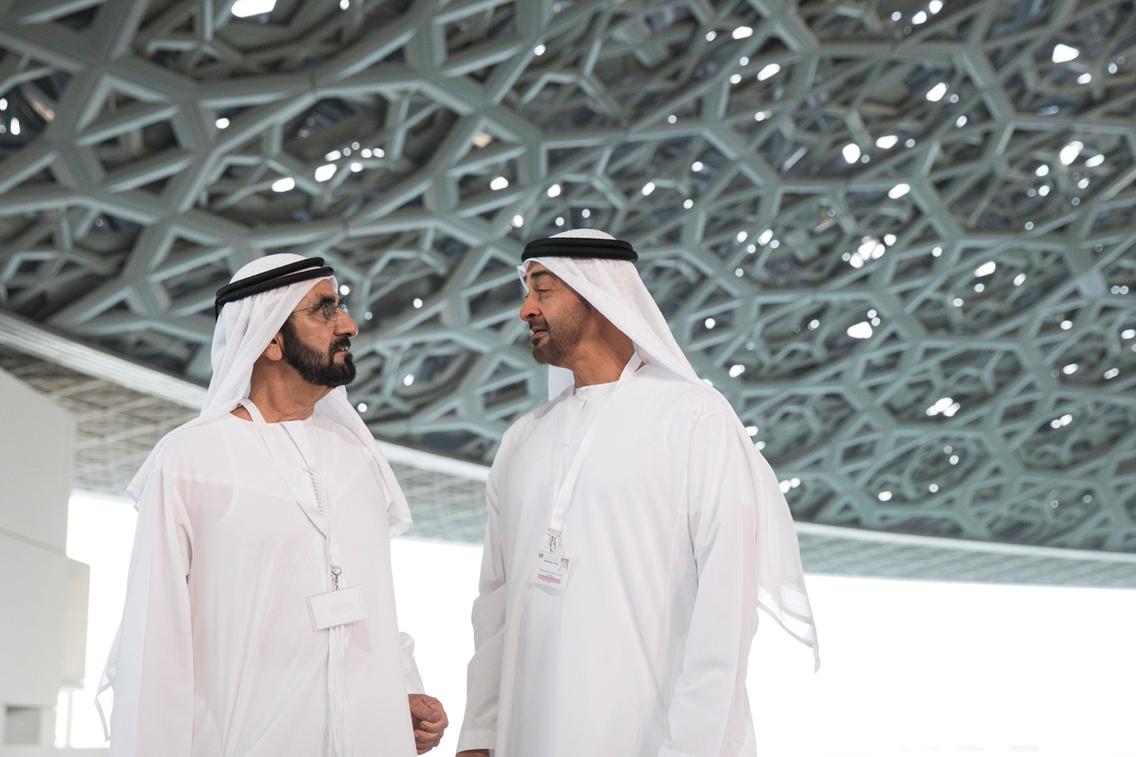
I.
One of the first treasures smashed by ISIS thugs in Palmyra was a 15-ton statue of a gentle lion. Two thousand years ago, the limestone creature greeted visitors to the shrine of Allat, a pre-Islamic goddess. Though armed with a menacing set of teeth, the lion was more a lover than a fighter. A gazelle crouched beneath his tufted mane, one hoof stretched demurely over the lion’s sturdy paw. Below, an inscription in the Palmyrene language vowed protection for the peaceful: “Allat will bless whoever will not shed blood in the sanctuary.”
The tide of blood engulfing Syria and Iraq is a human catastrophe that has led to the deaths of hundreds of thousands and the displacement of millions. To this horror, we can only append the destruction of antiquities as a footnote. It is striking, nevertheless, that one of the chief images of ISIS’s barbarity is its campaign of pillage and iconoclasm. While all sides in the conflict are guilty of crimes against humanity, ISIS alone is responsible for crimes against time. Palmyra’s ancient temples of Baal Shamin and Bel endured the passing of countless armies and empires (during their ransacking of the medieval Middle East, Mongol soldiers foraged around the ruins of Palmyra for sheep). But it was only in our modernity of international covenants and institutions that the temples fell to the cudgels of a few perverse men.
Archaeologists and art historians worldwide have bewailed the flattening of Palmyra, as well as ISIS’s iconoclastic excesses in Iraq — the ravaging of the Mosul Museum, the demolitions of Hatra and Nimrud. What could have been done to prevent these outrages? For a number of museum directors and curators in the west, the destruction reinforced an abiding belief in the necessity of their collections. This is why western encyclopedic museums are so essential, they argued: to keep civilization out of the hands of the barbarians. Wouldn’t it be better if the lion of Allat was safe in the west rather than crushed to rubble in the turbulent Middle East?

Coming from luminaries like James Cuno, CEO of the J. Paul Getty Trust, and Gary Vikan, former head of the Walters Art Museum in Baltimore, this salvo reopened the debate about where the cultural patrimony of the world should be housed. Since the passing of a 1970 UNESCO declaration on cultural property, governments of “archaeologically rich” nations — a biting euphemism that pertains mostly to the formerly colonized world, but also places like Italy and Turkey — have increasingly put pressure on big western museums to return objects of dubious provenance. The Metropolitan Museum of Art, for one, restituted hundreds of gold vessels, wall paintings, and jewelry to Turkey in 1993, after a long dispute made clear the works had been looted.
Demands for the “repatriation” of art have sparked a backlash. Curators and museum directors resent the climate of suspicion and scrutiny that has descended on their collections. In their view, not only do their museums offer the best environment to preserve cultural artifacts, they offer the best context in which to exhibit them.
European and North American institutions like the British Museum, the Louvre, and the Metropolitan Museum of Art emerged out of the Enlightenment, propelled by a spirit of open curiosity in the world. To wander through any of these museums is to be immersed in the links and dissonances of human culture, to form understandings that stretch beyond the conventional bounds of country and creed. The universal museum, its proponents insist, puts art in the service of humanity. Those demanding “repatriation” would rather have art serve the nation, that great bugbear of Cuno and his fellow-thinkers. Many artifacts returned from western universal museums to their countries of origin end up in displays that aim solely to burnish the history of a nation-state. The fear of western curators is that the agendas of Middle Eastern and Asian nationalists will constrain the cosmopolitan, global, humanist project of their museums.
Art world doyens are fond of invoking the Enlightenment, as if they were latter-day Voltaires struggling against ignorance and servility. In ISIS, however, they have found a horribly living straw man. With the rise of a philistine pseudo-caliphate seemingly intent on eradicating history, the “retentionists” might seem to have won the argument. ISIS, after all, has done more than just smash works of classical art and architecture; it has funded much of its barbarity through antiquities trafficking on a massive scale. Coins, statuary, and pottery continuously pass from the warzones of Syria, through middlemen on the Turkish border, onto a global black market. Speaking to the New York Times, Gary Vikan spun ISIS’s iconoclasm and looting as a vindication of the programs of universal museums in the west. “I think,” Vikan said, “this will put an end to the excess piety in favor of the repatriation model.”
And yet a great divide remains. There isn’t a more rewarding place to engage the world’s cultural heritage than in the broad confines of a universal museum, but the pleasure of that experience is restricted to those lucky few able to visit Europe and North America. Such museums often lie in cities that grew wealthy and powerful on the back of European imperialism. If universal museums were products of the Enlightenment, they were also inextricably formed by empire. In former colonies, it is still a source of deep grievance for many people that so much of the cultural wealth of their ancestors now sits behind glass (or molders in basements) in London and Paris, Berlin and New York. Even Kwame Anthony Appiah, a scholar of cosmopolitanism and a defender of these museums and the principles they enshrine, describes them as “suspected strong-rooms of plunder and pillage.”
We face a Catch-22 of sorts. “Retentionists” like Cuno and Vikan argue that objects should stay in the universal museums of the west because no other venues are comparably universal. But how will museums outside the west ever be sufficiently high-minded and global if they can’t get a hold of a great range of objects in the first place?
Abu Dhabi has found one solution: spend lots of money. Starting next year, the world outside the west is going to have, for the first time, its very own universal museum. The Louvre Abu Dhabi, open now after years of delays, will bring to the United Arab Emirates a museum whose display of art of all ages and regions seeks to rival the great edifices of the west. Alongside it will stand (eventually) a new branch of the Guggenheim Museum, offering the emirate a foothold in the current contemporary art arms race alongside a historical bulwark.
In a time of relentless convulsions in the Middle East, the building of such museums in the Gulf is the loud and confident act of an ambitious state. But it is also a more tentative experiment, a test of the nature of art as a commodity in the 21st century. Is it possible to translate institutions so synonymous with the liberal values of the west to a society where many of those values remain alien?
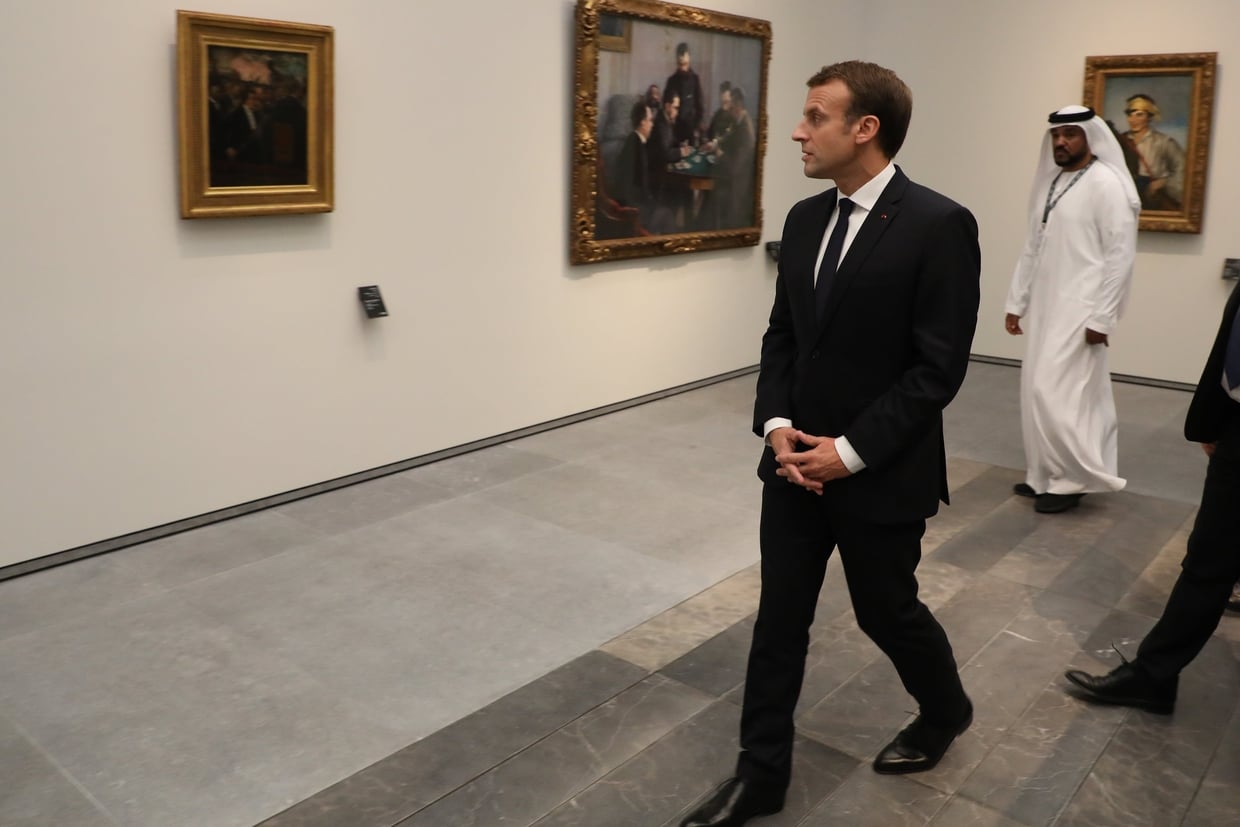
II.
When they are finally completed, both the Louvre Abu Dhabi and the Guggenheim Abu Dhabi will be almost entirely surrounded by water. Perched on the eastern rim of Saadiyat Island — a monumental $27 billion complex that seeks to turn the capital of the United Arab Emirates into a global cultural hub — they will look like fantastical chrome-and-glass atolls, constructions that could just as easily have dropped from space to dock on Abu Dhabi’s shores as sprouted from the sand. Like all statements of power, they suggest an imperviousness to misfortune elsewhere, floating serenely above the threat of climate change and rising sea levels. Nothing captures the strange ambition of these museums better than their location on the edge of Abu Dhabi, tenuously attached to the mainland by textured steel and chrome.
Architecturally, the closest precedent for Saadiyat Island is Berlin’s Museuminsel, whose clustered institutions include the Pergamon and the Altes Museum. Unlike its Emirati counterpart, the German museum complex was built piecemeal over the course of a century; it stood in ruins for much of the Cold War, and it is still in the process of being united into a coherent cultural center. Berlin’s neoclassical arts hub also lacks Saadiyat Island’s additional frills, which include a performance space designed by Zaha Hadid, a gleaming campus of New York University, a marina, a golf course, exclusive villas, and luxury hotels. Saadiyat Island promises to be a high-brow and high-rolling amusement park, a place to park your yacht or toddle from green to green in close proximity to some of the world’s most celebrated art.
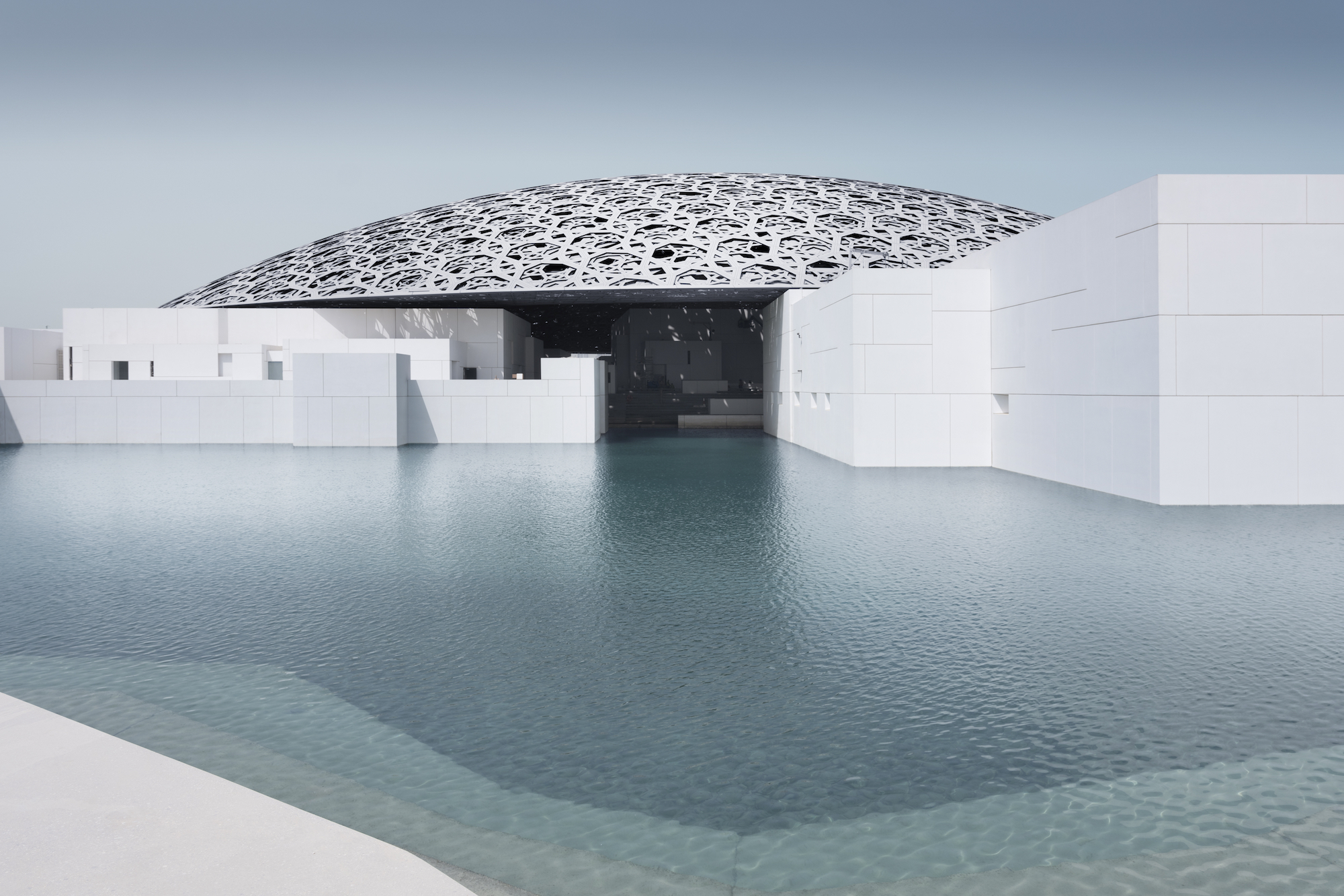
The sums involved are significant by any measure. Abu Dhabi signed a deal with French officials in 2007 worth over one billion dollars to win use of the Louvre’s name, to construct the Jean Nouvel-designed building that will house the new Louvre Abu Dhabi, and to facilitate special exhibitions and cultural loans from French institutions. The Louvre branding itself is worth over half the value of the total: $520 million for a period of 30 years.
A similarly gargantuan sum was promised to the Guggenheim. Curators have been granted a $600 million budget for new acquisitions, while the museum designed by Frank Gehry — a medieval jumble of cones and impossible angles — will cost $800 million to build. It will be twelve times as large as its Manhattan progenitor.
More so than other bastions of oil wealth in the Gulf, Abu Dhabi has resolutely sought the cachet of western institutions to boost its international profile. This is most evident in the world of sports. Abu Dhabi invested heavily in acquiring and overhauling the English Premier League soccer team Manchester City, turning the club into the superpower of the world’s most popular sporting league (and spending over $1.5 billion in the process). Manchester City’s ground is now known as the Etihad Stadium, part of a sponsorship deal with Abu Dhabi’s luxury-besotted airline. The club’s Etihad-emblazoned jerseys can be found in shops from Manchester to Mumbai. More recently, Abu Dhabi partnered with the New York Yankees to plonk an Etihad-branded soccer team in the Big Apple.
The ties to New York don’t end there. Development on Saadiyat Island includes a lavishly funded and controversial campus of New York University, which aims to become one of the premier academic centers in the region, granting the same degree to Gulf students as it does to New Yorkers. Abu Dhabi has shouldered the expense of building the new campus, whose construction is now complete. Abu Dhabi is also paying the salaries of the professors brought to teach there, and even subsidizing students’ tuition. (Neither NYU nor Emirati officials have revealed the full cost of the project, but Abu Dhabi paid an initial $50 million merely to secure NYU’s interest.) Its students and professors will inhabit a so-called “cultural free zone,” opening a tiny redoubt of liberal norms of academic free speech in an otherwise illiberal country. At least allegedly. Earlier this year, the New York Times reported on limitations to academic freedom in the UAE, as well as the horrific living conditions of the workers building the campus. Once back in New York, the Times reporter found herself hounded by a private investigator, tasked with discrediting her.
Ostensibly, the goal of all this extraordinary expenditure is to transcend oil. The various galleries and institutions plopped down on Saadiyat Island hope to recast Abu Dhabi as a center for fine arts and learning. As Crown Prince Mohammed bin Zayed Al Nahyan said at a summit earlier this year, “Maybe in fifty years, we might have the last barrel of oil. The question is: will we be sad? If today we are investing in the right sectors, we will celebrate that moment.”
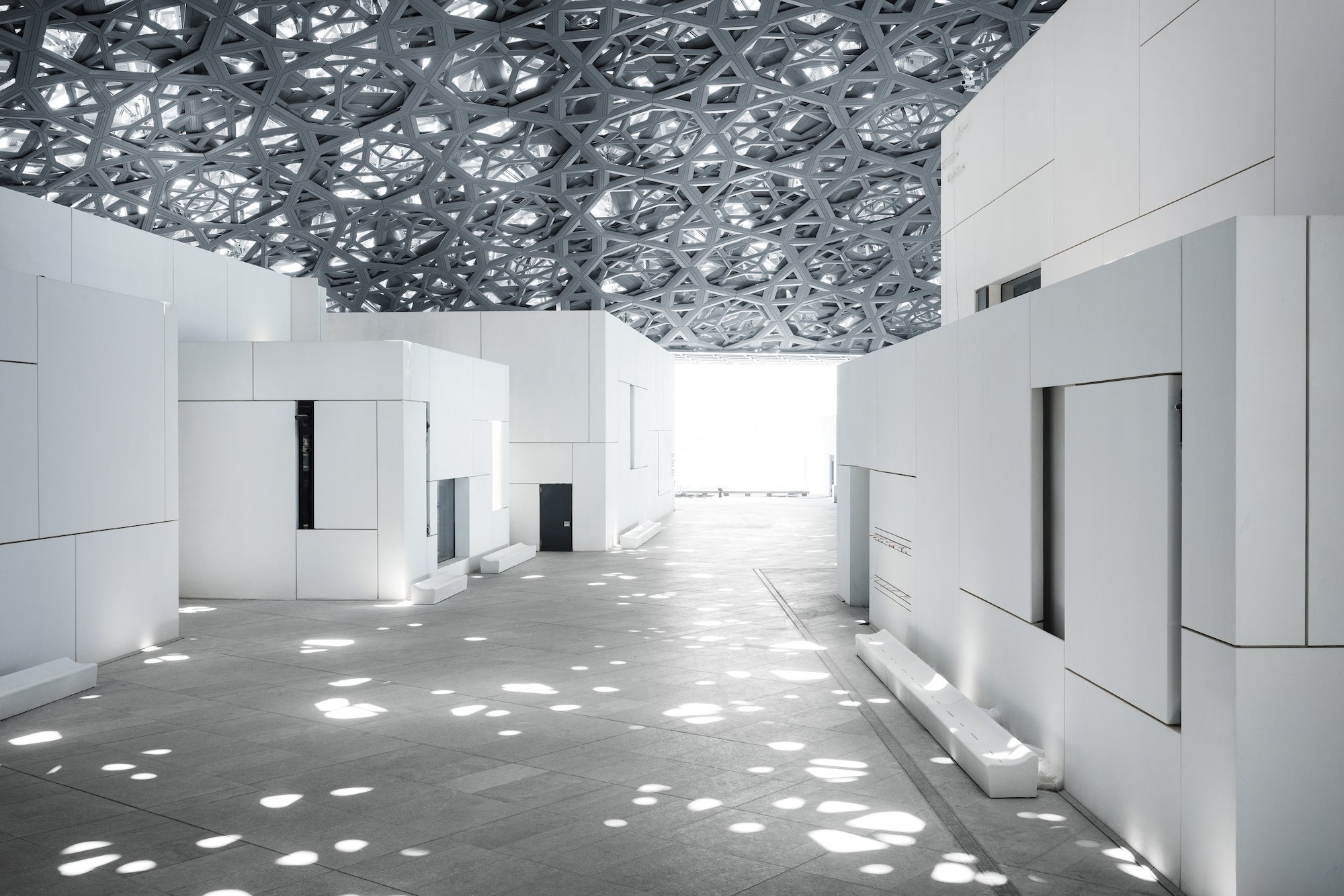
Even if the project can seem cloyingly contrived (saadiyat means happiness in Arabic), there is a tectonic logic to the expansion of museums outside Europe and North America. Despite recent misfortunes in emerging markets and the collapsing price of oil, the West's monopoly on power and wealth is eroding inexorably. Other institutions, in other places, are bound to reshape the international art world: Hong Kong has already established itself as a key node in the Asian art market, while new museums from Brazil to Russia to Singapore have positioned themselves in a thriving global network of arts institutions, almost all of them devoted to art since 1945.
But why, specifically, have the Louvre and Guggenheim landed in Abu Dhabi? Who are the Guggenheim and Louvre actually for? Who will benefit from Saadiyat Island? Critics of the UAE’s poor treatment of migrant labor — numerous reports in the Guardian have affirmed that the builders are modern-day slaves — argue that these museums offer only a liberal gloss on the illiberal conditions of their construction. In this view, Saadiyat Island is a smokescreen, a shop window for a society that doesn’t exist. Can museums cross borders as easily — and with the same impunity — as capital? Saadiyat Island proposes that global museums are like railroads or fiber cables, functional infrastructure that can spread over physical geography heedless of human geography.
Announcing its deal with Abu Dhabi, the Louvre justified the move by pointing to the city’s historical and modern cosmopolitanism. A statement on the Louvre website claims that the museum’s “universal approach suits Abu Dhabi well, reflecting the city’s position at the crossroads of east and west, and its vital ancient role in the days of the Silk Route.” This is a rather bald exaggeration. While the wider Gulf region has always sat on the trade routes of the Indian Ocean, Abu Dhabi itself didn’t exist in any form until 1791, when the nomadic Bani Yas tribe pitched their tents around a serendipitous spring. As many writers have noted, Abu Dhabi is itself only as old as the Louvre Museum. In 1791, just as the Bani Yas bedouin were setting down, the revolutionary National Assembly in Paris decreed that the royal palace should become a public gallery, which opened two years later, at the height of the Terror.
When oil was discovered in the region in the 1950s, fewer than one hundred thousand people lived in the Emirates, which were then still a British protectorate. Now the population of the UAE, whose capital is Abu Dhabi, is 9.35 million: a little smaller than Paris and its environs. Though small, the cities and states of the Gulf are islands of relative stability in a turbulent Middle East, offering refuge not simply to jet-setting upper-class elites and foreign “expats,” but to middle-class professionals, scholars, and artists from around the region. This is the more modest way to understand the Gulf ’s epochal ambitions. Where for centuries Damascus, Baghdad, and Cairo defined the Arab world, oil has tilted the scales of heft and influence towards the likes of Abu Dhabi and Dubai in the UAE, and Doha in Qatar.
Both the UAE and Qatar have increasingly involved themselves in regional conflagrations, including forays in Libya and Syria. In August, UAE troops entered Yemen. The UAE ranks fifth in the world in terms of military spending as a percentage of gross domestic product (just ahead of Israel). Since the convulsions of the ill-fated Arab Spring of 2011, both governments have worked hard to stamp out the merest inklings of dissent, jailing citizens and non-citizens alike. It is therefore a mistake to imagine the Gulf cities as versions of Singapore or Hong Kong, placid islands of global capital. The countries of the Gulf are not simply commercial and financial hubs, but nation-states — with all the bristling accouterments that implies.
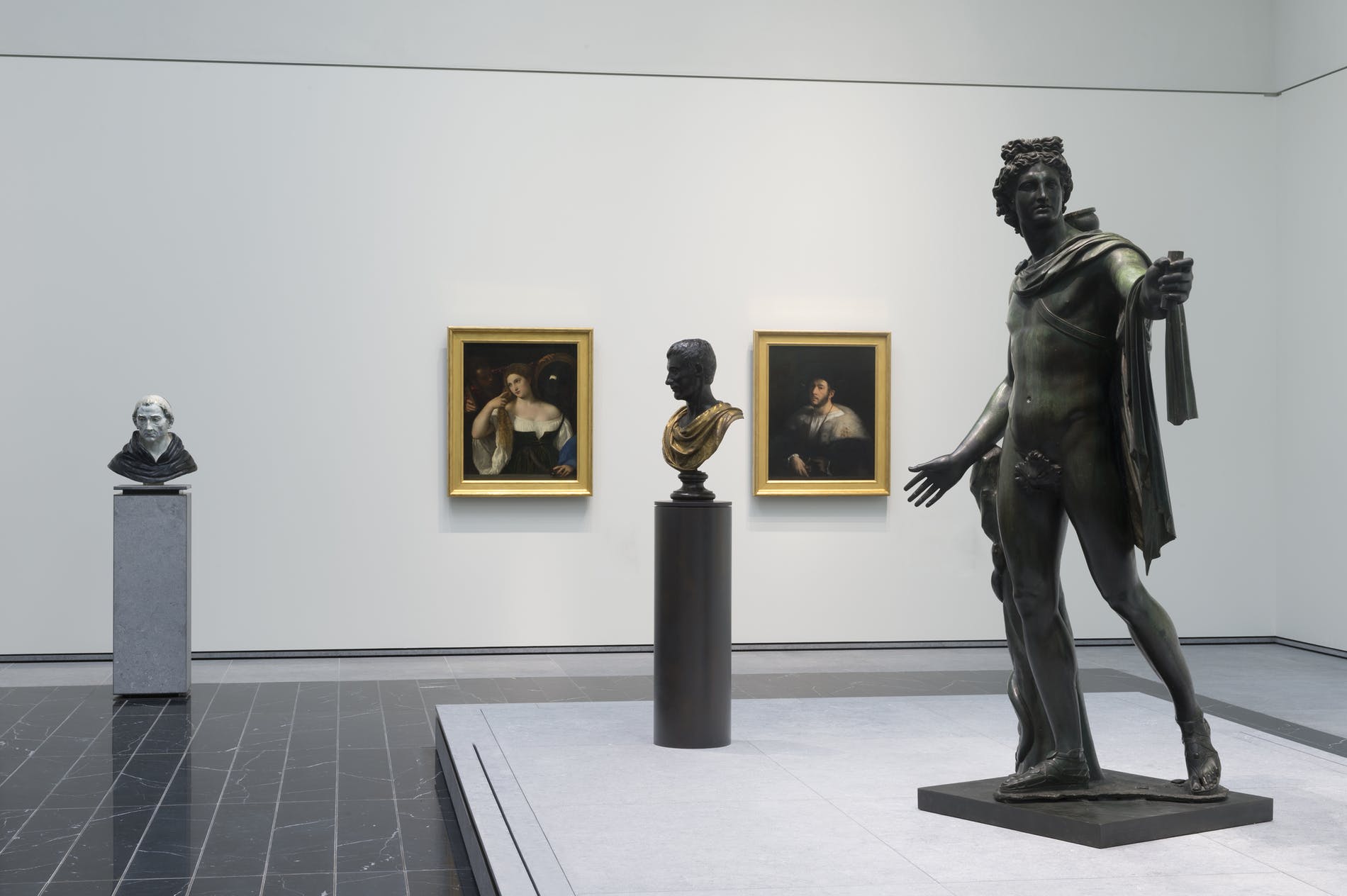
Within the UAE, competition for prestige is fierce. Abu Dhabi may sit on far greater reserves of fossil fuels than Dubai, but it has long been in the shadow of its more glamorous neighbor. Crowned by Saadiyat Island, Abu Dhabi’s slower and steadier approach hopes to avoid the pitfalls of Dubai’s boom-and-bust growth, symbolized most dolefully in the latter’s sky-high Burj Khalifa, which was renamed in honor of the emir of Abu Dhabi after Dubai’s real estate bubble burst and the more conservative emirate extended a $20 billion bailout.
A more serious rivalry exists with neighboring Qatar. Much like Abu Dhabi, Qatar has pumped money into soccer to raise its global profile, signing sponsorship deals with FC Barcelona, a ubiquitous soccer “brand,” and revamping French club Paris Saint-Germain. Qatar was also controversially awarded the rights to host the 2022 World Cup, the biggest and most important sporting tournament in the world. That decision may yet be reversed; FIFA, soccer’s comically corrupt governing body, is imploding under the weight of numerous indictments by the US justice department. But it remains a measure of Qatar’s wealth that a tiny nation of 2.1 million people could host a tournament last held by a country almost one hundred times its size.
Unlike Abu Dhabi, Qatar has not sought the imprimatur of western museums in its significant forays into the art world. Instead, it is building its own institutions, with three museums in Doha devoted to regional and Islamic art, one of which is designed by Nouvel. (Plans for a modern art museum with an international remit will, one hears, soon be unveiled.)
In 2012, the Metropolitan Museum of Art and the Museum of Modern Art each spent around $35 million on acquisitions; in the same year, Qatar is thought to have spent $1 billion. Under the aegis of the Qatar Museums Authority, the country has invested $25 billion in the global art market, including the remarkable $250 million acquisition of Paul Cézanne’s Card Players in 2011. That sum was the most ever paid for a painting until February 2015, when around $300 million was spent on Paul Gauguin’s When Will You Marry? by an unknown buyer, also thought to be the state of Qatar. The campaign has been masterminded by Sheikha Mayassa bin Khalifa Al-Thani of the Qatari royal family, and, though her spending power has been slightly curtailed since her brother became emir in 2013, she remains the single most important collector worldwide for blue-chip art.
The scale of Qatar’s acquisitions is over the top, but that is the point. For millennia, polities have sought to dress their hard power in the softer stuff. The bronze horses that gallop on the roof of San Marco in Venice were taken from Constantinople in the beginning of the 13th century, when Byzantium was in decline and the Venetians were building a sea empire in the Mediterranean. The bejeweled Peacock Throne was lifted from the waning Mughal Empire in India and spirited to 18th-century Iran. Many Egyptian obelisks wound up in European capitals. In the 19th century, a rapidly industrializing United States heralded its rise on the international stage by amassing art from Europe and elsewhere, and consecrating museums in cities like New York, Boston, and Cleveland. The American way of accruing artistic wealth might have been less bludgeoning than the methods of the past, but its motivation was the same. Art — or, more properly, the possession of art — was an assertion of arrival. Owning art, for nations as much as for individuals, signals that you’ve made it.
The deals with the Guggenheim and Louvre form Abu Dhabi’s entry into this age-old arms race for cultural capital. Emirati officials are conscious of the arriviste pretensions of Saadiyat Island. As one adviser admitted,“We have to begin somewhere. We know we cannot create culture overnight.”
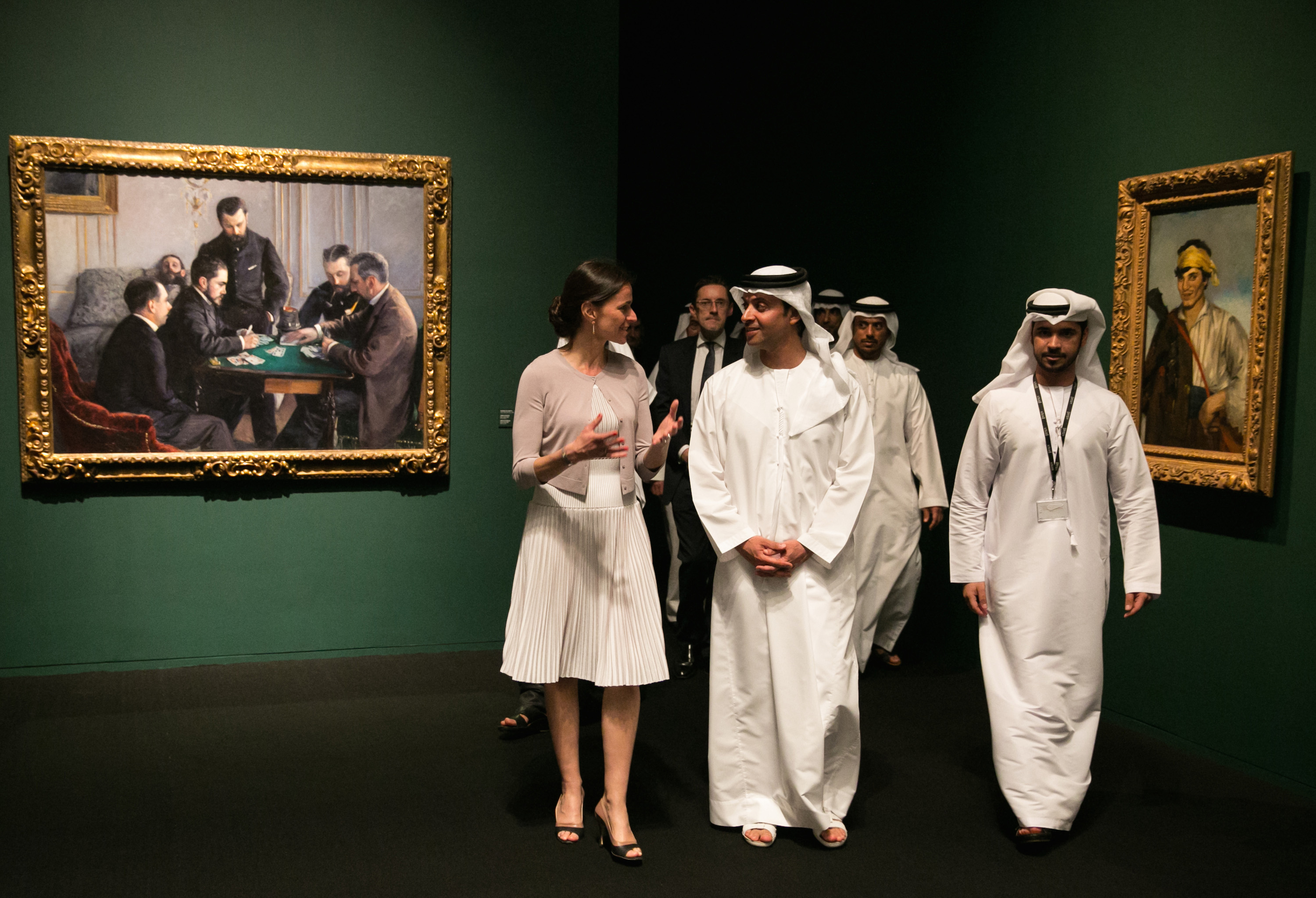
III.
Mythology, on the other hand, can indeed be created overnight. A third, less discussed museum in the complex is named after Sheikh Zayed bin Sultan Al Nahyan, the founder of the UAE, and designed by Norman Foster to resemble a falcon. Billed as a “national museum,” it will celebrate the history and accomplishments of the Emirates and the Gulf region. For a sizable fee, the British Museum has scheduled a tranche of loans to the Zayed National Museum, including Assyrian royal panels, a mummified falcon from Egypt, Achaemenid silverware, and a stone Buddha from Afghanistan. This somewhat disparate range of objects suggests the museum will peddle a familiar story, placing Abu Dhabi and the UAE at the confluence of ancient networks of trade and cultural exchange. Of course, Abu Dhabi is barely two centuries old. Its own archaeological record is meager. By amassing the historical culture of the wider region, the museum projects the UAE’s vision of itself in the present deep into the past. The Emirates’ emergence as a major international hub is made to seem inexorable. Proponents of universal museums deride this blunt kind of museography, the clear yoking of art to the service of a modern political narrative.
The Louvre Abu Dhabi, a universal museum, will sit only a stone’s throw from the Zayed National Museum. With Palmyra reduced to rubble, voices in the west insist that Mesopotamian and Greco-Roman antiquities are better off outside the region than within. The Louvre Abu Dhabi splits the difference, providing an opportunity for many people to be introduced to the delights of a high-quality world museum. (It is far easier, for instance, for South Asians to travel to the Gulf than to obtain visas to go to Europe.) It will also make its own small contribution to dismantling the idea that cosmopolitanism is the preserve of Europe and North America.
Resembling a flying saucer that has touched down in the Gulf, the Louvre Abu Dhabi will be an Emirati museum. It nevertheless has relied heavily on French guidance, not only from curators and consultants but from organs of the French state — reaching past the culture ministry to the diplomatic corps and all the way to three successive presidencies. (Indeed, the announcement of the Louvre deal with Abu Dhabi coincided with the building of a French military base in the UAE, and the Hollande government is currently negotiating the sale of 60 Rafale fighter jets to Abu Dhabi.) The Louvre Abu Dhabi, its parent institution says, “is intended to be a place of discovery, exchange and education....It will also play an important social role in the United Arab Emirates. In this respect, it can be seen as a product of the 18th-century Enlightenment in Europe.” With a whiff of the mission civilisatrice, the Louvre in Paris suggest that its Gulf spinoff will finally bring the Arab world into the relative modernity of the late 1700s.
It aims, however, to avoid a western point of view. It will abandon the traditional taxonomy of the Louvre in Paris and its fellow western museums, which classify and segment artifacts by region. Its organizing principle will be time, not space. According to museum officials, “the Louvre Abu Dhabi will be different. Its unique museographic approach — displaying objects and art chronologically — will explore connections between seemingly disparate civilizations and culture around the world. This is what will make the museum truly universal, transcending geography and nationality.”
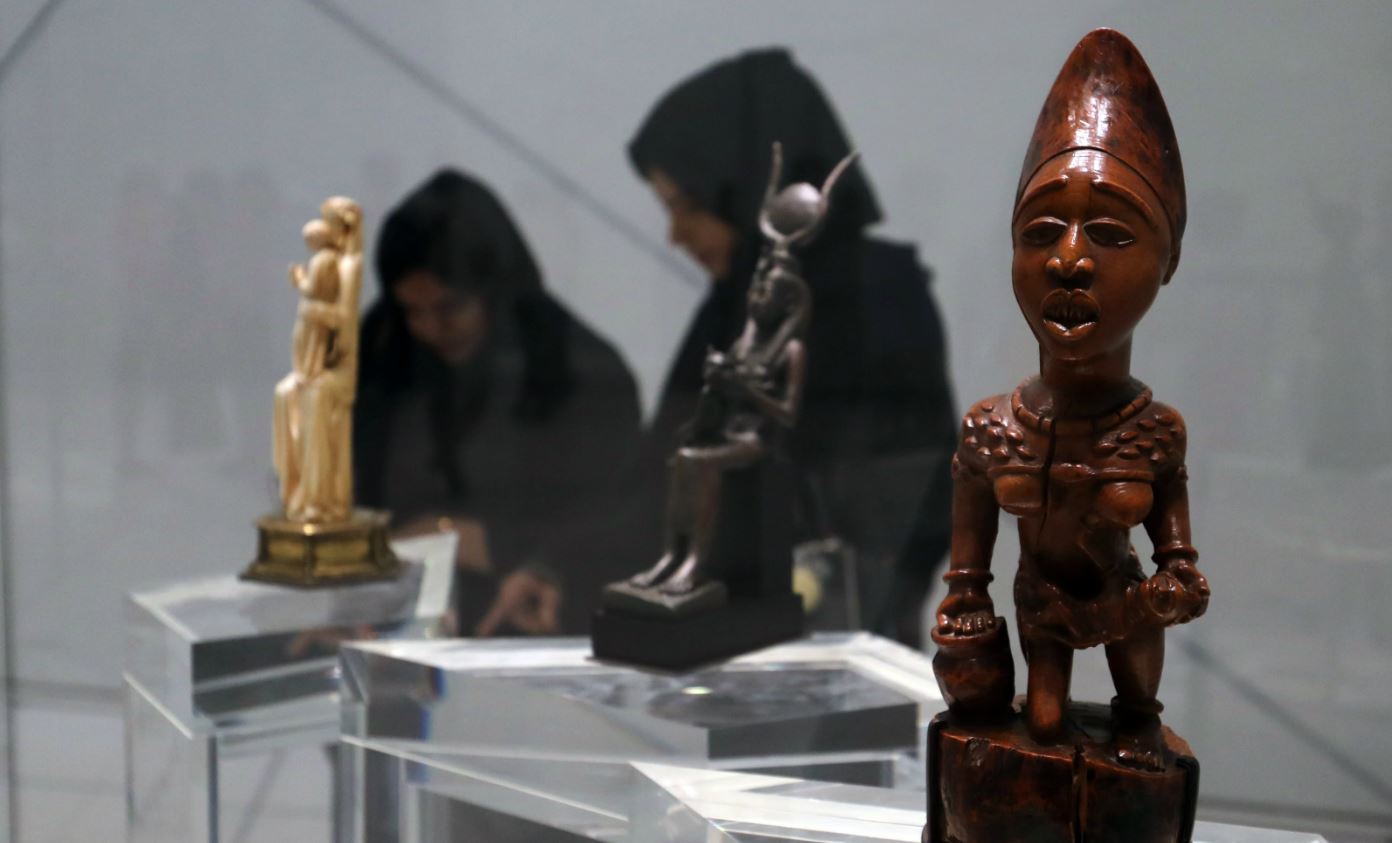
A more circumscribed version of this approach can already be seen at the Louvre’s outpost in Lens, a depressed mining town in northern France that has been home to a satellite of the Parisian flagship since 2012. The heart of Louvre-Lens is the Galerie du Temps, a single massive gallery in which works of art — from Egyptian, Persian and Greco-Roman antiquity all the way to 1900 — are arrayed in strict chronological order. Where other ways of ordering objects might emphasize discrete cultures and fenced-off civilizations, the Galerie du Temps encourages viewers to seek both commonality and difference in art. The impetus for such a revised presentation, we might note, came from architects outside the traditional west. Louvre-Lens was designed by the Japanese firm SANAA, and their Galerie du Temps is an explicit reworking of Lina Bo Bardi’s design for the Museu de Arte de São Paulo, which opened in 1968. At MASP, works were not hung on walls but placed on freestanding glass easels spread across the floor, creating a forest of art that contested the European teleology of art history and allowed connections across space and time.
It remains critical to remember that, unlike Louvre-Lens, the Louvre Abu Dhabi is not a branch of the Louvre. It is a new institution, Emirati and not French, that has rented the name “Louvre” until 2037. It is also renting 300 artworks from the Louvre, the Musée d’Orsay and other French museums, including Manet’s Fifer, David’s Napoleon Crossing the Alps, Whistler’s portrait of his mother, Titian’s Woman with a Mirror, and Leonardo’s La Belle Ferronnière. (No self-respecting nouveau riche can be without a Leonardo.) And it has acquired many works of its own, on the advice of French curators. Critics of the Louvre Abu Dhabi have warned that a museum in conservative Abu Dhabi may shy from much of western art history — nudes, notably, or else paintings of Christian saints — though according to Jean-Luc Martinez, the Louvre’s soft-spoken new director, the Emiratis imposed “no censorship....not of themes, not of techniques, not of countries.” One hundred fifty works from the Louvre Abu Dhabi’s growing collection were seen in Paris in 2014, at the exhibition “Birth of a Museum,” which the (French) Louvre celebrated as a “dialogue between civilizations, in a spirit of universality and humanism.” Some of the works on display were strong, such as a fine Madonna and Child by Giovanni Bellini. Others were more dubious, and the connections among them were opaque. Little of that mattered to those at the vernissage, first among them François Hollande.

Nevertheless, the planned display of Louvre Abu Dhabi is a measure of how much the Louvre itself has moved from its roots, when as a national museum it sought to produce an emboldened citizenry. “The ritual task of the Louvre visitor was to reenact [a] history of genius,” the art historian Carol Duncan writes, “relive its progress step by step and, thus enlightened, know himself as a citizen of history’s most civilized and advanced nation-state.” In the 19th century, almost every western nation established a similar public art museum, whose function, at least in part, was to stage a civic ritual of cultural specificity and national greatness.
The Louvre Abu Dhabi, by contrast, will try to conjure the experience of belonging not to a nation-state or even a civilization, but to the world. There is a wonder to the prospect of being able to flit from, say, Han dynasty pottery to the statuary of Mesoamerica to funerary reliefs from Sidon. That experience may well produce the kind of “secular cosmopolitan space” craved by proponents of universal museums like James Cuno. But there is a clear irony: this post-national presentation is being paid for and masterminded by a government using art as an instrument of national power, and the bourgeois values of liberty and individualism are nowhere to be found in autocratic Abu Dhabi.
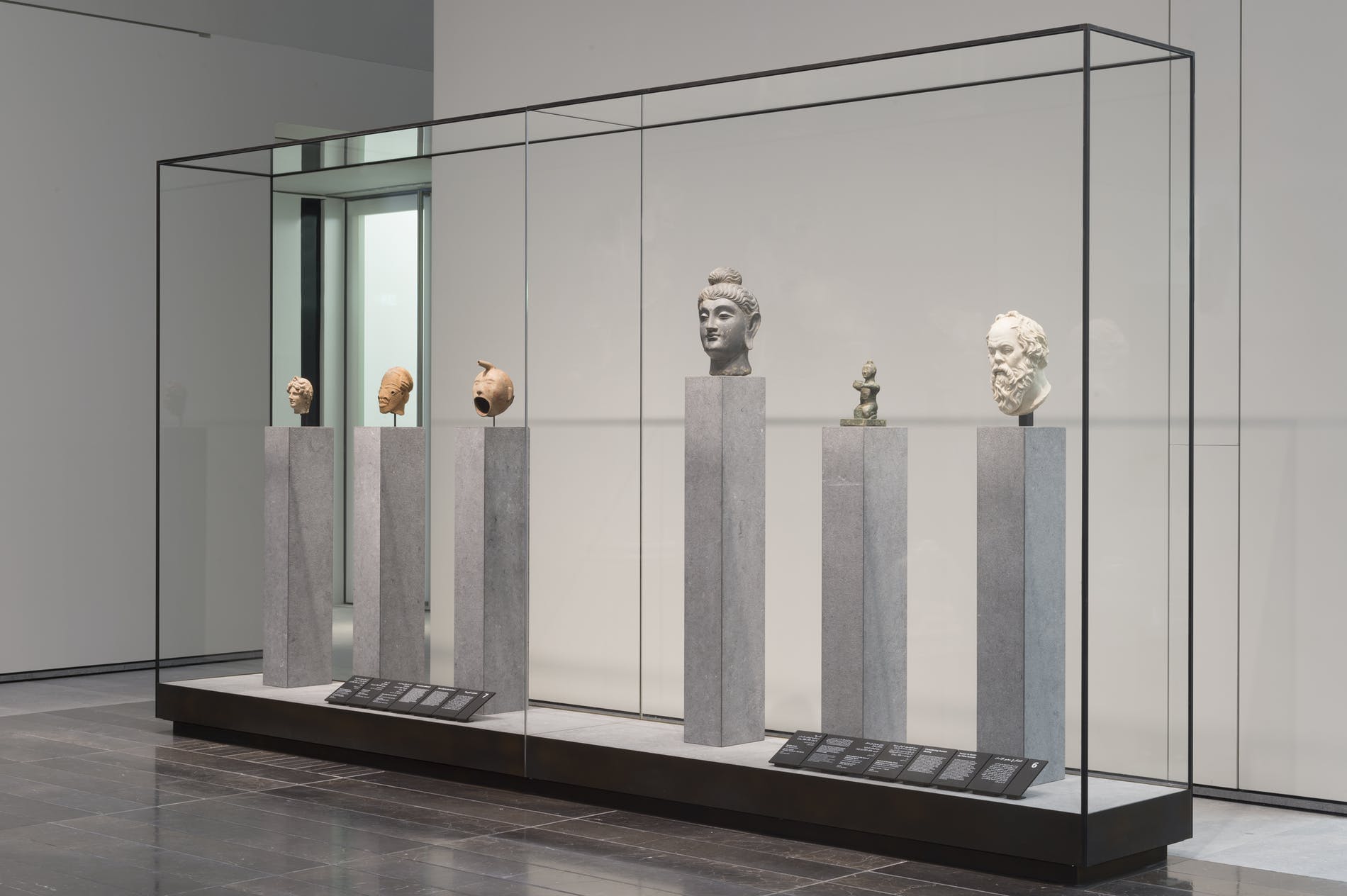
That irony extends past historical art and into the present day, in the form of the Louvre’s neighboring institution of modern and contemporary art. The Guggenheim Abu Dhabi is one of the final legacies of Thomas Krens, who before stepping down as Guggenheim director in 2008 masterminded satellite museums in Bilbao (a great success), Las Vegas (a bust), and Berlin (good until the sponsor’s money ran out). Proposed Guggenheims in Mexico, Brazil and Taiwan did not come to fruition, though one in Finland is set to arise soon. In all but the Las Vegas case, the Guggenheim has insisted the daughter museum would have a different orientation from the mother, usually spelled out with buzzwords from contemporary thinking on globalization. Here, for a taste, is a 2012 curatorial statement: “The impulse toward homogenization has been eclipsed by connected and conjoined localities.... How can the Guggenheim, with its own early history steeped in European modernism, become meaningfully transnational?”
The answer has proved rather straightforward: the collection of the Guggenheim Abu Dhabi will be far more representative of the non-western world. More than half of the collection will be drawn from the surrounding region. Curators, working from New York, have also acquired a great deal of work from Southeast Asia and other areas not widely exhibited in traditional western modern art galleries. The emphasis will be on work produced after 1960, that moment so synonymous with the eruption of Pop art and minimalism — and, not coincidentally, the era of the birth of the UAE. Yet again: fifty years of culture cannot be created overnight, but Abu Dhabi’s mythic position as a valuable central force in its dissemination and presentation can.
IV.
According to James Cuno, the cosmopolitanism of universal museums grows naturally from their urban contexts. He describes the 18th-century London that gave birth to the British Museum: “Along with immigrants from Ireland and sailors and merchants back from the Americas and the East Indies, it had a larger black population than any city outside Africa.” London was “one of the world’s largest and busiest cities, where people and things from all over the world lived and worked.” Abu Dhabi of the 21st century can be discussed in this way. The museums of Saadiyat Island trade on the matter-of-fact globality of the city, its role as an international entrepôt, its polyglot and multi-confessional communities.
But is the mere fact of Abu Dhabi’s diversity enough to characterize the society that the Louvre and the Guggenheim will soon call home? For skeptical outsiders, the Gulf has a dubious, ersatz quality. Its geography is metaphor: the veneer of a vibrant coast over the desert hinterland. The glitzy cosmopolitanism of Dubai or Abu Dhabi or Doha cannot mask the aridity of their illiberal host societies. The UAE, for instance, restricts personal and political freedoms and operates what is in effect a 21st-century caste system, stratifying Emirati citizens, well-heeled foreign professionals, and the huge underclass of workers from south and southeast Asia. The great divide between the elite and its subcontracted proletariat lends itself to caricature, of falconeering sheikhs building their decadent lifestyles on the backs of migrant labor.
Emirati citizens, who make up only 11 percent of the population, enjoy the perks of a generous welfare state, which include free healthcare and education, exemption from income tax, substantial pension funds, bonuses paid to Emirati grooms who marry Emirati brides, housing benefits, and so forth. (A similar situation obtains in neighboring Qatar, where Qataris make up only 12 percent of the population.) The UAE’s legions of migrant workers comprise over half the country’s population and have no political rights, leaving them vulnerable to appalling abuses. The Gulf ’s kafala (or sponsorship) labor system relies on the desperation and enormous supply of willing workers from poorer countries. Foreigners sent home over $29 billion in remittances from the UAE last year. Nearly a fifth of the population of the south Indian state of Kerala — from where many migrants go to the Gulf — receive funds from abroad.
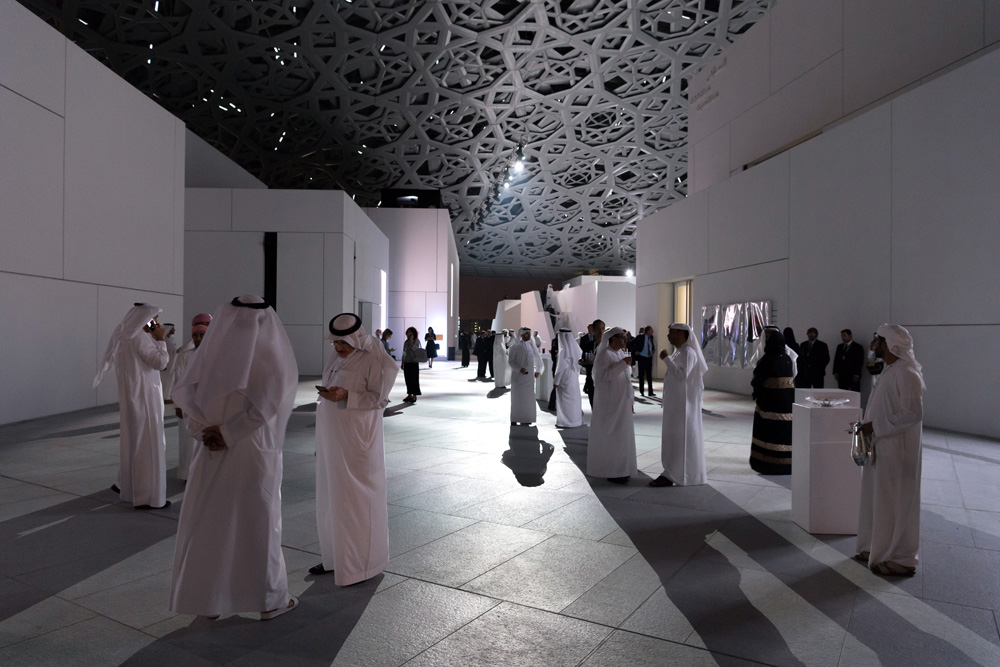
By hanging on to the coattails of famous western museums, Abu Dhabi has at once won more attention than Qatar and invited more scrutiny upon Saadiyat Island. Human Rights Watch and Guardian investigations have revealed that workers constructing the sparkling complexes on Saadiyat Island have been treated abysmally. They live in squalid conditions, have their passports confiscated, suffer from wage theft and underpayment, are deeply indebted, and are denied any rights of organization. The reports sparked protests in New York, with activists targeting both the Guggenheim and New York University.
Both institutions face pressure from Gulf Labor — a coalition of artists, scholars, and other concerned individuals — to “assert responsibility for the well-being of these workers.” In a reluctant letter to the New York Times in June, Guggenheim director Richard Armstrong insisted that conditions on Saadiyat Island had improved in terms of “worker accommodation, access to medical coverage, grievance procedures and passport retention.” He nevertheless acknowledged the Guggenheim’s inability to more broadly affect the political and legal landscape of the UAE, admitting that the museum has “no jurisdiction over these matters.” An August report released by Gulf Labor found that poor conditions persist on Saadiyat Island, despite a public relations campaign to highlight a model housing complex for the island’s workers.
Accusations of abuse will beset the construction of the Guggenheim (which has yet to be built), just as they have the nearly completed Louvre Abu Dhabi. In June, a Pakistani worker was killed in the process of adding the final touches to Nouvel’s building. Emiratis often bristle at the attention that outsiders place on their labor system. Every country is home to exploited labor, including the United States, where migrants with few rights and protections form an enormous and inextricable part of the economy. Few contemporary American building projects, however, are as deadly as these grand developments in the Gulf, and what is galling about exploitation in the region is that it is entirely formalized. The abuse happens above board and with direct legal sanction.
Beyond the material circumstances of the building of the museums, the UAE’s overwhelming reliance on migrant labor poses another important question. Museums like the Louvre and the Guggenheim emerged in Paris and New York with the aim of serving the public. They enshrined the belief that art was a common good, and that museums could help foster an enlightened and humane society. How can that original mission be translated to a place with no clear sense of a public, where citizens and expats lead lives so utterly separate from and different from those of the great body of workers?
Despite the nationalist aims of Abu Dhabi’s museum construction, the “audience” envisioned for the museums of Saadiyat Island is palpably not a national one. Armstrong has talked up the number of tourists that come through the region, noting that the expansion of Abu Dhabi’s airport will soon allow it to handle the traffic of 45 million passengers annually. Thanks to their useful location between Asia, Africa, and the west, airports in the Gulf have already supplanted many of their European counterparts in funneling people around the world. Saadiyat Island will be the ultimate stopover destination. Its museums will cater to the worldly sensibilities of travelers, condensing the global in the Guggenheim’s cones and in the Louvre’s spiraling corridors.
Abu Dhabi officials talk vaguely about the connection between the museums and their domestic society. One curator confessed to the Times that “it will take one or two generations before a museum like the Guggenheim Abu Dhabi will soak into the quotidian part of life.... It will take a while to feel internalized and natural.”
But internalized and natural to whom? The sliver of the population that are citizens? Surely not the nearly five million South Asian migrants, many of whom lead immiserated lives in segregated camps, bunked in sweltering cabins? The curious truth about Abu Dhabi’s grand projects — from Saadiyat Island to the English-language newspaper The National — is that they presume an interested civil society that doesn’t exist and can’t easily be magicked into existence. They must operate above and beyond the level of “the local” precisely because the local is too small and too segmented to be a meaningful constituency.
Saadiyat Island should be judged in this harsher light. It is unquestionably a vanity project, aspiration inflated to monumental proportions. It promises a recreational and educational idyll made for glossy magazines. Of course, many fine and serious minds are right now researching acquisitions and devising exhibitions for the new Guggenheim and Louvre. That work doesn’t deserve to be denigrated, but the enterprise that work serves was not conceived in the classroom or the studio, but in the boardroom and the business class lounge.

V.
When the French revolutionaries summoned it into existence in 1791, the Louvre in Paris marked a clear break from the past. As Duncan and other historians of the museum have shown, the Louvre smashed apart the old tradition of cabinets of curiosities and of princely collections, which served primarily to dazzle visitors, glorify the monarchs who owned them, and solidify their claims to rule. The Louvre, by contrast, laid out paintings and sculptures in a procession of art-historical schools, each of which expressed a national or cultural “genius,” and addressed visitors not as aristocratic connoisseurs but as citizens. The museum sought to serve a public that, however shadowed by the specter of the nation, was imagined in the broadest terms.
Without this clear relationship between art and society, the museums on Saadiyat Island turn back the clock. They may adopt sophisticated museo-graphic practices and cherry- pick from the latest trends in cultural theory, but their main aim is to dazzle and awe, to plump the reputation of Abu Dhabi and its rulers. Western museums have been only too happy to abet this project and lap up the largesse of the Gulf. For the Etihad-pampered visitors to Saadiyat Island, the effect of touring its galleries will be much like that of seeing the royal collections of the 17th and 18th centuries. All the wonders they encounter within will be refracted through the inescapable power of the king.
It is unfortunate that the first museum to break the West's monopoly of the universal is so ethically flawed. The likes of James Cuno, head of the Getty, and Neil MacGregor, departing chief of the British Museum, are right to emphasize the need for humanist institutions like theirs in a time when information technology, global capital, and resurgent chauvinisms shove people both together and apart. Yet lifting the universal museum from its bedrock of western privilege remains a major challenge. Kwame Anthony Appiah suggests that the internet could be better harnessed to make these staggering collections accessible to everyone in the global south. We shouldn’t sniff at online dissemination of art, but it still insists on the grossly unfair divide between people who get to experience art intimately, on the other side of the glass, and people who will only ever see that art from a remove, pixelated on the screen.

Universal museums will never be evenly distributed around the world. The same legal and political conditions that limit the directors of the great western museums will make it hard for museums in Asia, Africa, and Latin America to build their own diverse collections. The laissez-faire norms of the 19th and early 20th centuries have given way to a more rigid system of cultural exchange, in which would-be curators cannot imitate their European forebears in happily relieving the world of its cultural patrimony. The best they can hope for is a trickle of expensive and grudging loans from institutions in the west.
Short of a Met in every middling metropolis, an ideal future for the universal museum might look something like this. It would be constantly in motion, moving from country to country as a touring exhibition of the world’s cultural patrimony. Like the Louvre Abu Dhabi, it would be organized chronologically, avoiding the taxonomy of region and civilization. People in Lagos and Lima might walk its halls, studying the intricacies of Safavid chainmail or the unfurling of Chinese landscapes, and feel as much of a claim to those objects as Londoners do now. This roving caravan of marvels would be a logistical nightmare and a fiscal impossibility, but it would best express the ethos of the global museum, free of the bedeviling complications of place.